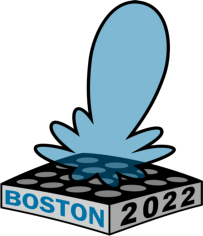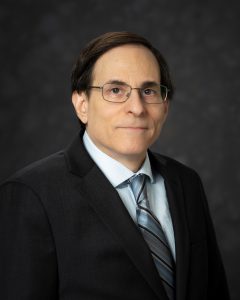2022 IEEE International Symposium
on Phased Array Systems and Technology
Revolutionary Developments in Phased Arrays
11–14 October 2022

Tutorial: Phased Array Antenna Measurements
Overview
Accurate characterization of RF phased array antenna systems, typically in an indoor anechoic chamber environment, is desired prior to field deployment for communications, radar, and sensing applications. This tutorial reviews various measurement techniques applied to phased array antennas for determining the far-field radiation patterns and for element diagnostics and array phase and amplitude alignment. Theory behind the methods and examples of measurements of antenna arrays using the following techniques will be discussed:
- Planar near-field
- Cylindrical near-field
- Spherical near-field
- Compact range and far-field
- Focused near-field adaptive array
Other phased array measurement topics including array mutual coupling, scan reflection coefficient, element gain, ultrawideband arrays, array calibration, and on-platform measurements will be presented.
Attendees will receive the following tutorial materials:
Book: A.J. Fenn, Electromagnetics and Antenna Technology, Artech, 2018.
Electronic copy: Tutorial presentation slides
Outline:
•Introduction / background
• Basic array parameters
Array mutual
coupling
Scan reflection
coefficient
Element gain
• Phased array antenna measurement techniques
Introduction
Measurement Techniques
▪ Far-field
▪ Compact range
▪ Focused near-field range
▪ Near-field scanning (planar, cylindrical, spherical)
▪ Calibration using mutual coupling
Planar near-field scanning for low-sidelobe arrays
▪ Theory
▪ Results
• Summary
Adaptive array focused near-field testing
• Comparison of far-field and near-field interference
• Focused near-field adaptive nulling test concept and simulations
• Adaptive phased array test bed and measurements

Alan J. Fenn, PhD
Alan Fenn is a senior staff member in the RF Technology Group at Lincoln Laboratory, Massachusetts Institute of Technology. He has conducted extensive research in the area of phased array antennas. He joined Lincoln Laboratory in 1981 and was a member of the Space Radar Technology Group from 1982 to 1991, where his primary research was in adaptive phased-array antenna design and testing. From 1992 to 1999 he was an assistant group leader in the Radio Frequency Technology Group where he managed programs involving RF measurements of atmospheric effects on satellite communications. From 1978 to 1981, he was a senior engineer in the Antenna Systems and Design/Analysis Group in the RF Systems Department at Martin Marietta Aerospace, Denver, Colorado. He received a B.S. from the University of Illinois at Chicago, and an M.S. and Ph.D. from The Ohio State University, Columbus, all in electrical engineering. Dr. Fenn is a Life Fellow of the IEEE for his contributions to the theory and practice of adaptive phased-array antennas. He served as the Technical Program Chair of the 2019 IEEE International Symposium on Phased Array Systems & Technology and is currently serving as an advisor for the 2022 symposium. He was a Technical Program Chair of the 2018 IEEE Antennas and Propagation Society Symposium. He has served as an associate editor in the area of adaptive antennas for the IEEE Transactions on Antennas and Propagation. He was a co-recipient of the 2016 IEEE Aerospace Conference M. Charles Fogg Best Paper Award. In 1990 he was a co-recipient of the IEEE Antennas and Propagation Society’s H.A. Wheeler Applications Prize Paper Award. He also received the IEEE/URSI-sponsored 1994 International Symposium on Antennas (JINA 94) Award. Dr. Fenn has authored the book Electromagnetics and Antenna Technology as well as four other books and numerous journal articles, patents, and short-course lectures and conference presentations on phased array antennas.
Alexander F. Morris, MIT Lincoln Laboratory, USA
The Advanced Technology Demonstrator (ATD) is a 4864-element, S-band, dual-polarization phased array radar. The antenna features a low-cost, panel-based tile architecture that has been developed through a collaboration between Lincoln Laboratory and MACOM technologies. The ATD antenna was constructed and underwent testing at Lincoln Laboratory’s Large Planar Near-Field Scanning Facility. Testing was completed in May 2018, and the system was deployed to Norman, Oklahoma, USA where it is serving as the primary asset for the National Severe Storms Laboratory (NSSL) in the research of dual-polarization phased array weather radar techniques. This tutorial will provide an overview of the ATD system, describe the near-field measurement techniques that were used in anechoic chamber testing, and present measurement results for field testing at the ATD test site.
Outline:
•Introduction / background
• S-band Dual-Polarization Phased Array Radar system characteristics
Radiating elements
Transmit and receive (TR) modules and beamforming
• Near-field techniques for phased array calibration
Element-wise amplitude and phase alignment
Measurement Techniques
• Planar near-field measurements
Test plan and scan parameters
Antenna performance figures of merit
Practical considerations
• Deployment field-site measurements
Built-in test
Calibration
Far-field testing
- Summary

Alexander F. Morris, M.S.
Alex Morris is an associate technical staff member in the RF Technology Group at Lincoln Laboratory, Massachusetts Institute of Technology. He received B.S. and M.S. degrees in electrical engineering from the University of Alaska, Fairbanks. Since joining Lincoln Laboratory in 2014, he has been working on the development, design, and measurements of phased array antennas. He has been responsible for developing calibration and near-field measurements procedures for a low-cost panel-based S-band Dual-Polarization Phased Array Radar system, which is currently being evaluated as an Advanced Technology Demonstrator (ATD) at the National Weather Radar Testbed (NWRT) at the National Severe Storm Laboratory (NSSL) in Norman, Oklahoma. He is a co-author of the paper “Multifunction phased array radar advanced technology demonstrator nearfield test results” presented at the 2018 IEEE Radar Conference. He was a speaker in the Phased Array Measurements Tutorial at the 2019 IEEE International Symposium on Phased Array Systems & Technology.
Copyright 2022